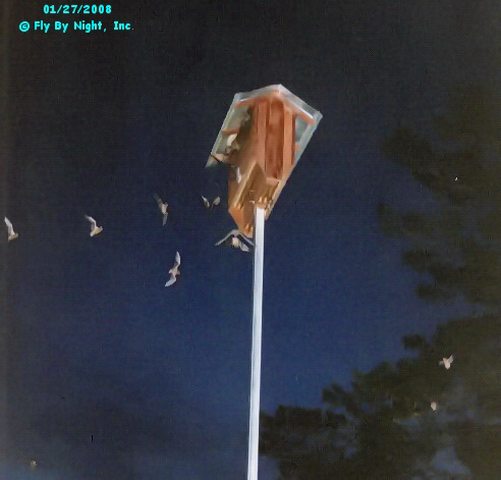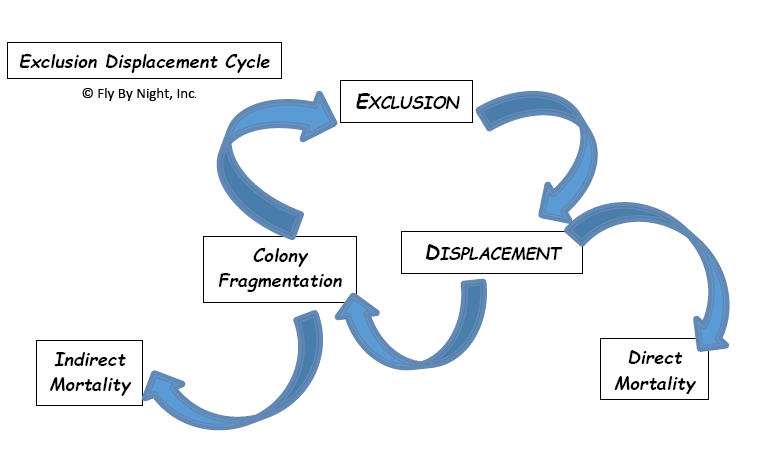Roost Mitigation: Why Bat Houses Are Important

site continued for several days.
Roost mitigation was declined by the property
owner. Bats eventually moved to unknown locations.


"Bats in a bat house are not in your house"
(Laura Finn, Founder of Fly By Night, Inc.)
Visit our
Guiding Truths
Roost Mitigation breaks the exclusion/ displacement cycle. This protects bats and reduces the need for future management. ***Protects the local bat population AND saves money***
Regardless of methodology, exclusion ALWAYS results in roost loss. Displaced colonies fragment as evicted bats are suddenly forced to roost elsewhere, they assimilate with neighboring colonies or move to new sites in nearby buildings where they are again unwanted and vulnerable to future management or control measures. Colony fragmentation and gradual population decline can be masked by reports of sudden ‘population’ increases nearby — an artifact that occurs when suitable alternate roosts are limited or absent.
Displacement can not be prevented, but it can be effectively managed with advance roost mitigation. Suitable alternate roosts are needed to mitigate for roost loss, but are rarely provided; leaving urban bats caught in a cycle of eviction, exclusion and displacement.

Prevention of future problems should be the true goal of any population management project and roost mitigation is vital to successful management. Sadly, displaced bats are viewed as ‘job security’ by some unscrupulous ‘professionals'.
Homes for Homeless Bats — A Win—Win solution
When properly implemented, well in advance of scheduled displacement, bat houses can provide displaced bats with suitable alternate roosts that can mitigate roost loss.
Successful bat houses can transform what may have been an "on-going problem" into a valuable conservation asset. These managed roosts can
provide a long-term, win-win solution that benefits the local community as well as the bats. In the absence of roost mitigation, displaced bats
are forced to move to nearby buildings where they are vulnerable to additional management or control measures and the displacement cycle
continue.
Bats need time, however, to recognize a bat house as a potential roost site and initial occupancy can take time (our occupancy record is <12 hours
-- see Appendix 2, Example 4). Most bat houses installed prior to scheduled roost disturbance are occupied within a year and roost mitigation should always be initiated as early as possible prior to displacement and as close as possible to the occupied structure.
Bat houses work beautifully once established. As bat populations adapt to roosting in bat houses, rather than buildings, additional houses are often occupied soon after installation.
P.O. Box 562
Osteen, FL 32764-0562
Phone: 407-414-2142
E-mail Us